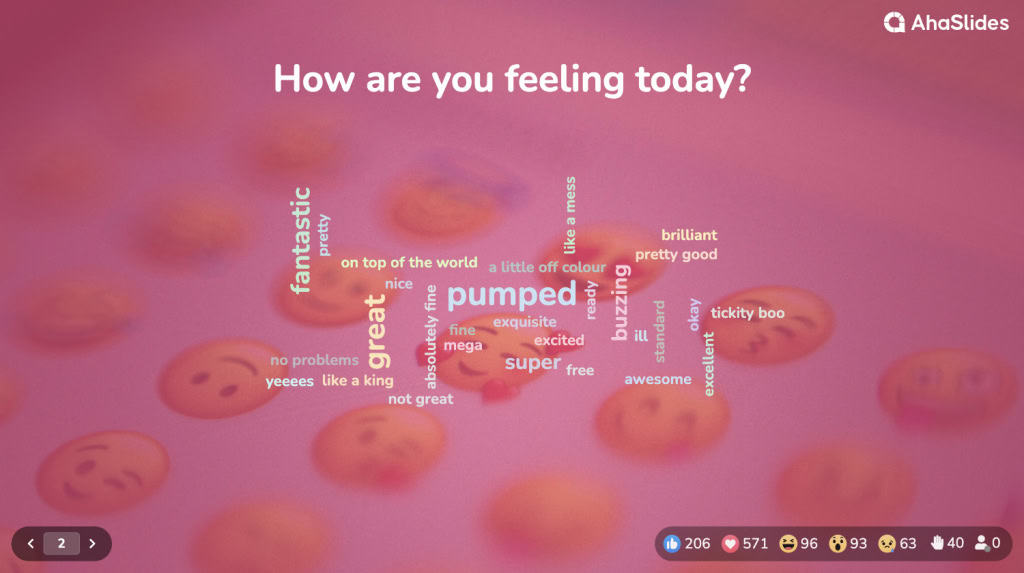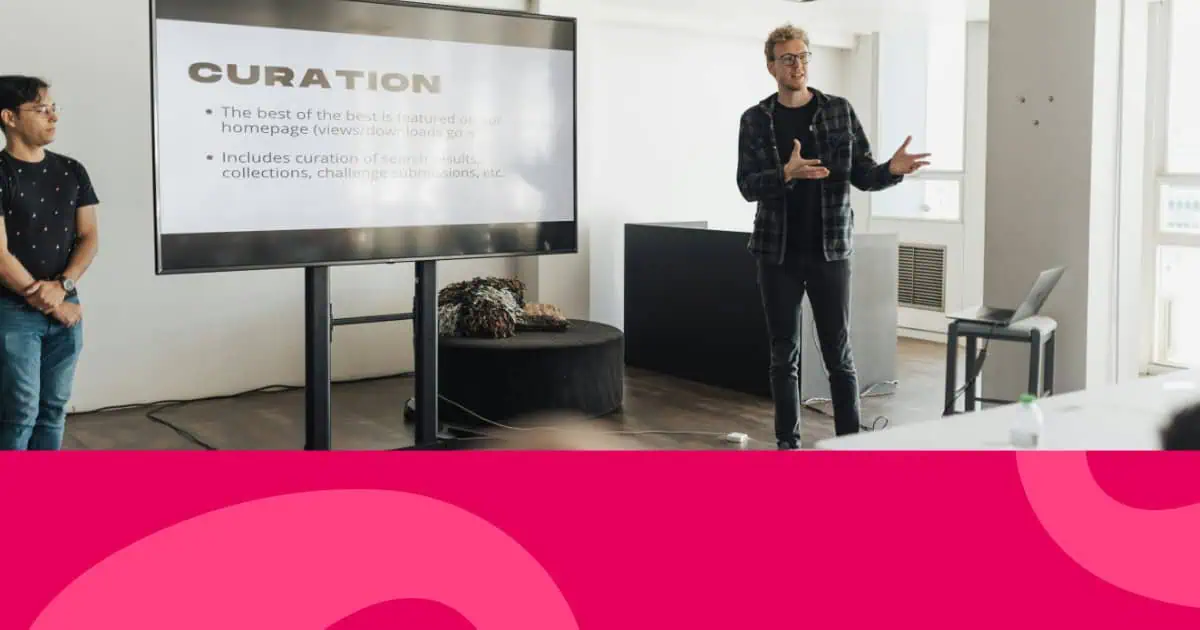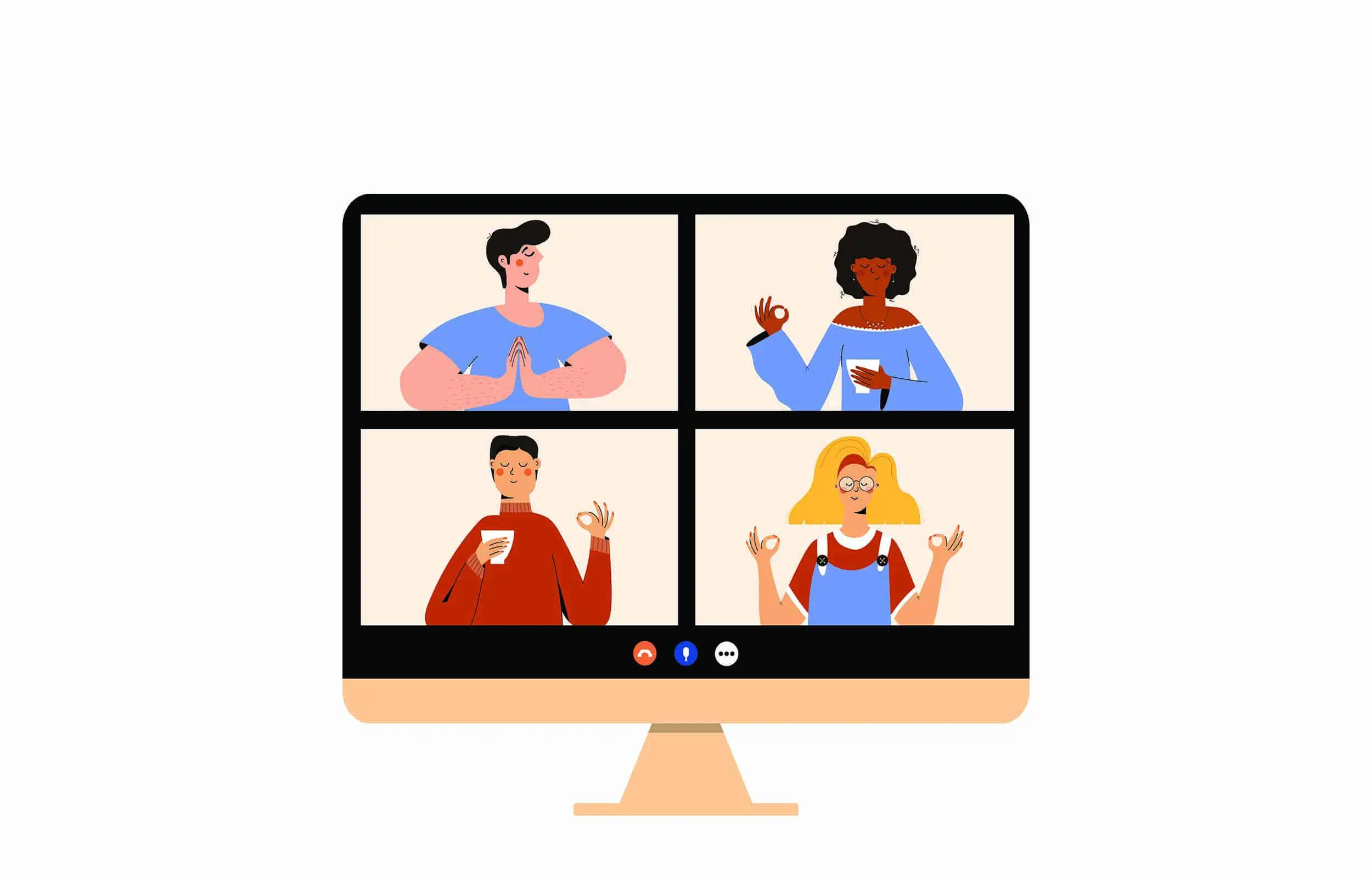What does your body language during the presentation say about you? We all have moments when we don’t know what to do with our hands, legs, or any part of our body during presenting.
You may have a fantastic icebreaker, impeccable introduction, and excellent presentation, but the delivery is where it matters most. You don't know what to do with yourself, and it's perfectly normal.
In this article, we will walk you through 10 tips for mastering body language during a presentation so you can not only send the right signals but also feel better about yourself.
Overview
| What is the body language of embarrassment? | Slumped shoulders, lowering our head, looking down, no eye contact, inconsistent speech |
| Can the audience tell when presenters are shy? | Yes |
| Why was Steve Jobs's presentation so good? | He just practised a lot, along with interesting presentation outfits |

Grab attention right from the beginning
Hook your audience with ice-breaking interactive live polls and word clouds. Sign up to grab free templates.

Table of Contents
Why Your Body Language During Presentation Matters
Your body language is like a silent conversation you're having with everyone around you. Before you even open your mouth, people are already picking up signals about whether you're confident, nervous, friendly, or closed off.
According to research by Albert Mehrabian, when delivering a message about feelings or attitudes:
- 55% of the impact comes from body language and facial expressions
- 38% comes from vocal tone and delivery
- Only 7% comes from the actual words spoken
Your body language is always telling a story. Might as well make it a good one, right?
10 Tips to Master Body Language in Presentations
Consider Your Appearance
First, it is essential to have a neat look during presentations. Depending on which occasion, you may have to prepare the appropriate outfit and well-groomed hair to show your professionalism and respect to your listeners.
Think about the type and style of the event; they may have a strict dress code. Choose an outfit you’re much more likely to feel poised and confident in front of an audience. Avoid colours, accessories, or jewellery that might distract the audience, make noise, or cause glare under stage lights.
Smile, and Smile Again
Don’t forget to “smile with your eyes” instead of just your mouth when smiling. It would help to make others feel your warmth and sincerity. Remember to maintain the smile even after an encounter—in fake happiness encounters; you may often see an “on-off” smile that flashes and then vanishes quickly after two people go their separate directions.
Open Your Palms
When gesturing with your hands, make sure your hands are open most of the time, and people can see your open palms. It is also a good idea to keep the palms facing upward rather than downward most of the time.
Make Eye Contact
It is usually a bad idea to make eye contact with individual members of your audience! Finding a sweet spot for “long enough” to look at your listeners without being offensive or creepy is necessary. Give it a try to look at others for about 2 seconds to lessen awkwardness and nervousness. Don’t look at your notes to make more connections with your listeners.
Hand Clasping
You may find these gestures helpful when you want to conclude a meeting or end an interaction with someone. If you want to appear confident, you can use this cue with your thumbs stuck out—this signals confidence instead of stress.
Blading
It’s lovely to relax your hands in your pockets once in a while around close friends and trusted others. But if you want to make the other person feel insecure, sticking your hands deep in your pockets is a surefire way to do it!
Touching Ear
Touching the ear or a self-soothing gesture subconsciously takes place when a person is anxious. But do you know it is a good help when encountering difficult questions from audiences? Touching your ear when thinking of solutions may make your overall posture more natural.
Don’t Point Your Finger
Whatever you do, don’t point. Just make sure you never do it. Pointing a finger while talking is taboo in many cultures, not only in presentations. People always find it aggressive, uncomfortable, and offensive.
Control your Voice
In any presentation, speak slowly and clearly. When you want to underline the main points, you may speak even more slowly and repeat them. Intonation is necessary; let your voice rise and fall to make you sound natural. Sometimes, say nothing for a while to improve communication.
Walking Around
Moving around or staying in one spot when you are presenting is fine. Yet, don’t overuse it; avoid walking back and forth all the time. Walk when you intend to engage the audience while you are telling a funny story or while the audience is laughing.
4 Body Gesture Tips
Now, let's go over some quick tips on body language and how to develop your presentation skills regarding:
- Eye contact
- Hands & Shoulders
- Legs
- Back & Head
Eyes
Don’t avoid eye contact like it’s the plague. Many people don’t know how to make eye contact and are taught to stare at the back wall or someone's forehead. People can tell when you're not looking at them and will perceive you to be nervous and distant. I was one of those presenters because I thought public speaking was the same as acting.
When I did theatre productions in high school, they encouraged us to look at the back wall and not engage with the audience because it would take them out of the fantasy world we were creating. I learned the hard way that acting is not the same as public speaking. There are similar aspects, but you don't want to block the audience from your presentation - you want to include them, so why would you pretend they aren't there?
On the other hand, some people are taught to look at just one person who is also a bad habit. Staring at one individual the entire time will make them very uncomfortable and that atmosphere will distract the other audience members as well.

DO connect with people like you would a normal conversation. How do you expect people to want to engage with you if they don't feel seen? One of the most helpful presentation skills I’ve learned from Nicole Dieker is that people love attention! Take time to connect with your audience. When people feel that a presenter cares about them, they feel important and encouraged to share their emotions. Shift your focus to different audience members to foster an inclusive environment. Especially engage with those already looking at you. Nothing is worse than staring down at someone looking at their phone or program.
Use as much eye contact as you would when talking to a friend. Public speaking is the same, just on a larger scale and with more people.
Hands
Don’t restrict yourself or overthink it. There are so many ways to hold your hands incorrectly, like behind your back (which comes off as aggressive and formal), below your belt (limiting movement), or stiffly by your sides (which feels awkward). Don’t cross your arms; this comes off as defensive and aloof. Most importantly, don’t over-gesture! This will not only become exhausting, but the audience will begin to fixate on how tired you must be rather than the content of your presentation. Make your presentation easy to watch, and, therefore, easy to understand.

DO rest your hands in a neutral position. This will be a bit above your belly button. The most successful looking neutral position is either holding one hand in another or simply just touching them together in whatever way your hands would naturally. Hands, arms, and shoulders are the most important visual cues for the audience. You should gesture like your typical body language in a regular conversation. Don’t be a robot!
Legs
Don’t lock your legs and stand still. Not only is it dangerous, but it also makes you look uncomfortable (making the audience uncomfortable). And no one likes to feel uncomfortable! The blood will start to pool in your legs, and without movement, the blood will have difficulty recirculating to the heart. This makes you susceptible to passing out, which would definitely be … you guessed it … uncomfortable. On the contrary, don’t move your legs too much. I’ve been to a few presentations where the speaker is rocking back and forth, back and forth, and I paid so much attention to this distracting behaviour that I forgot what he was talking about!

DO use your legs as an extension of your hand gestures. Take a step forward if you want to make a statement that connects with your audience. Take a step back if you want to give space for thought after an astounding idea. There is a balance to it all. Think of the stage as a single plane - you shouldn’t turn your back on the audience. Walk in a way that includes all people in the space and move around so you can be visible from every seat.
Back
Don’t fold into yourself with slumped shoulders, drooping head, and curved neck. People have subconscious biases against this form of body language and will begin to question your capability as a presenter if you project as a defensive, self-conscious, and insecure speaker. Even if you don't identify with these descriptors, your body will show it.

DO convince them of your confidence with your posture. Stand straight like your head is connected to a taught string attached to the ceiling. If your body language portrays confidence, you will become confident. You will be surprised by how little adjustments will improve or worsen your speech delivery. Try using these presentation skills in the mirror and see for yourself!
Lastly, if you have confidence in your presentation, your body language will improve drastically. Your body will reflect how proud you are of your visuals and preparedness. AhaSlides is a great tool to use if you want to become a more confident presenter and WOW your audience with real-time interactive tools they can access while you're presenting. Best part? It's free!
Frequently Asked Questions
What can you do with your hands when presenting?
When presenting, it's important to use your hands purposefully to make a positive impression and enhance your message. Therefore, you should keep your hands relaxed with open palms, use gestures to benefit your presentation and maintain eye contact with your audience.
Which type of gestures should be avoided in a speech?
You should avoid distraction gestures, like: speaking dramatically but not relevant to your contents; fidgeting like tapping your fingers or playing with objects; pointing fingers (which show disrespect); crossing arms and surprisingly and overly formal gestures!








